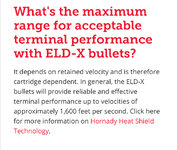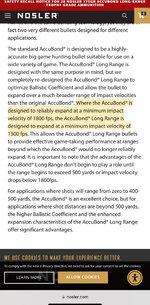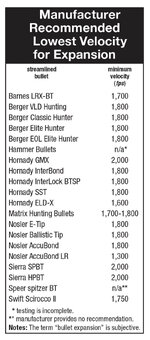A
Article 4
Guest
Nice job actually reading the entire study.I found the findings and recommendations of this study very interesting and, surprisingly, validating.
The final recommendation of the study was "In addition, bullets that fragment and meet minimum penetration requirements generate higher pressure waves than bullets that do not fragment. Understanding the potential benefits of remote ballistic pressure wave effects leads us to favor loads with at least 500 ft-lbs of energy."
It also mentions that incapacitating effects are "significant" at 500 ft-lbs, and "easily observable" at 1000 ft-lbs.
To me this supports what is being said in the .223 for deer, elk, moose thread.
● Use a fragmenting bullet that still achieves minimum desired penetration.
●Energy is a non-issue out of a rifle at practical ranges. Going with the 500 ft-lbs the study found to be lethal takes my 6.5 CM with ELD out past 1000 yards and my .223 woth 73 ELD-M out to 550 yards. Even if I go with the "easily observable" energy effects on killing of 1000 ft-lbs, I can still take my 6.5 CM out to 800 yards for hunting (which I don't plan on any time soon).
I'm not trying to run up to a moose and hit it with a sledge hammer. lol. My 210 ablr works great and I’ll continue to use it so that do both make a hole and transfer energy
One of the effects that has confirmed proper bullet placement at longer ranges has been the wave of energy that surrounds the bullet hole and ripples the skin. Sort of like an oar in the water or a drop of water hitting the flat surface of a lake. What makes the ripple? Energy transfer. The bigger and faster the drop hits, the more ripples. Energy cannot be destroyed. It is simply transferred from one object or process to another.





